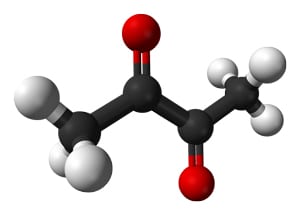
March 26, 2018
Do E-Cigarettes Contain Dangerous Chemicals?
By Michael D. Shaw
The Consumer Advocates for Smoke-free Alternatives Association (CASAA) has put together an incredibly detailed Historical Timeline of Electronic Cigarettes, featuring more than 200 events. While e-cigs were introduced to the US and Europe in 2006—based on a Chinese product developed in 2003—their history appears to date back to 1930. The express purpose of the Chinese product was to counteract the smoking habit of its inventor Hon Lik. No doubt, the recent lung cancer death of his father, also a heavy smoker, played some part in his efforts.
Various studies, such as this one from theBMJ, indicate that e-cigs can really help people to stop smoking. Yet, much of officialdom has been at war with these devices since their introduction. In 2015, this column ran some articles on the subject, noting that public health outfits lining up with the tobacco companies embody the aptly named Bootleggers and Baptists phenomenon, originally described by economist Bruce Yandle.
Inasmuch as a combustion process as well as countless flavoring agents are involved, no one is suggesting that e-cigs are 100% safe. By the same token, though, zealots who attempt to draw danger equivalency between e-cigs and conventional cigarettes are not only terribly misguided, but they have no concept whatsoever of harm reduction.
In 2015, Smokefree Pennsylvania submitted to the FDA a 158-page comprehensive analysis of the scientific evidence on vaping. Here is the Executive Summary:
E-cigarettes…
– are 99% (± 1%) less hazardous than cigarettes,
– are consumed almost exclusively (i.e. >99%) by smokers and ex-smokers who quit by switching to e-cigs,
– have helped several million smokers quit and have helped several million additional smokers sharply reduce cigarette consumption,
– have replaced about 2 Billion packs of cigarettes in the US in the past five years,
– are more effective than FDA approved nicotine gums, lozenges, patches and inhalers for smoking cessation and reducing cigarette consumption,
– pose fewer risks than FDA approved Verenicline (Chantix),
– have not been found to cause any disease or disorders in users,
– pose no risks to nonusers,
– have further de-normalized cigarette smoking,
– have never been found to create nicotine dependence in any nonsmoker, and
– have never been found to precede cigarette smoking in any daily smoker.
As to those chemicals, you may recall the e-cig formaldehyde scare, stemming from a January, 2015 letter to The New England Journal of Medicine. Within a short time, though, these results and the methodology were subject to serious question by a host of experts, including Michael Siegel, of the Boston University School of Public Health. For one thing, the temperatures used in the NEJM work were much higher than are found in typical e-cigarettes. A recent replication study cast doubts on the earlier work, as well.
There is also the matter of diacetyl (butane-2,3-dione), a flavoring agent found in some e-liquids. Diacetyl provides an intense buttery flavor (as used in microwave popcorn), and became associated with a condition called “popcorn lung” (bronchiolitis), a rare and serious fixed obstructive lung disease. I say “associated with” since a direct connection has been implied, but not proven. Indeed, one of the problems with this association—as it plays out with workers who might inhale powdered diacetyl—is that tobacco smoke itself contains diacetyl, and this may have confounded lab results. In addition, popcorn plant workers are exposed to many other substances.
It should be emphasized that as a flavoring agent, diacetyl has long been classified as “generally regarded as safe.”
A widely publicized study from Harvard’s T.H. Chan School of Public Health looked for the presence of diacetyl, 2,3-pentanedione, and acetoin in 51 different e-cigs. The researchers found at least one of the chemicals in 92% of the samples, with 76% containing diacetyl. The article recommended “urgent action to further evaluate this potentially widespread exposure via flavored e-cigarettes.”
However, as was pointed out by e-cig researcher Konstantinos Farsalinos, MD…
“The levels of these compounds are absolutely minimal, and it is not expected to raise any concerns about human health effects. Additionally, the authors failed to mention the presence of these compounds in tobacco cigarette smoke. This omission creates the impression that e-cigarettes are exposing users to a new chemical hazard, while in reality their exposure will be much lower compared to smoking.”
He also criticizes the authors’ contention that NIOSH-defined safety limits for the compounds studied should not apply, in that they are intended for the work environment, and not the general population, which might include more vulnerable individuals. This notion is absurd based on the obvious fact that e-cigs are used by smokers, and healthy or not, tobacco smoking is a far greater risk factor than e-cigarettes could provide. Never-smokers should not use e-cigs, and no one is suggesting that they should.
But, if you are a smoker who wants to quit, e-cigarettes could be the answer.
